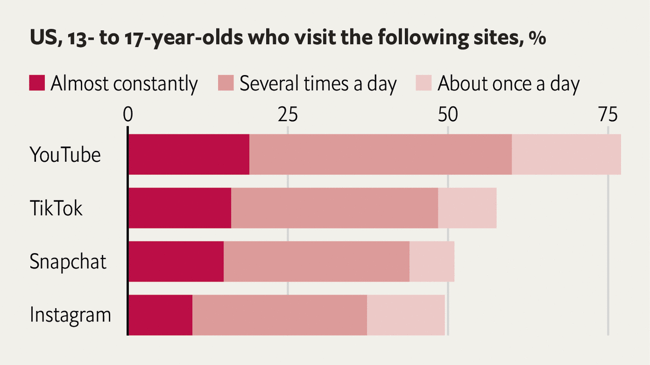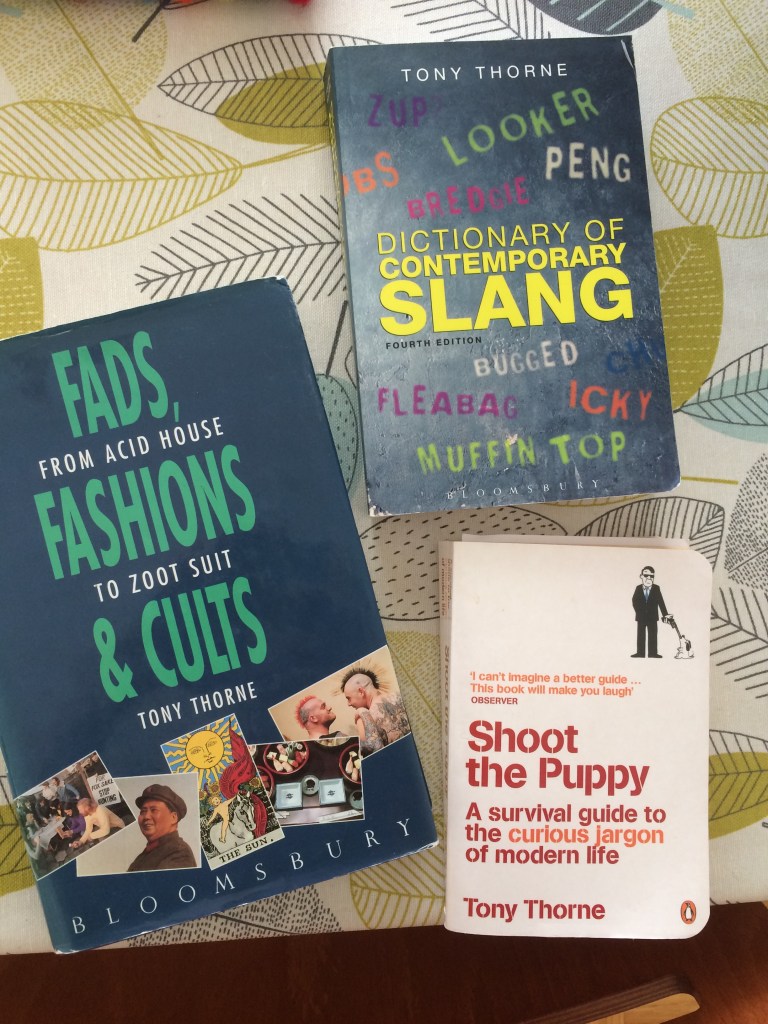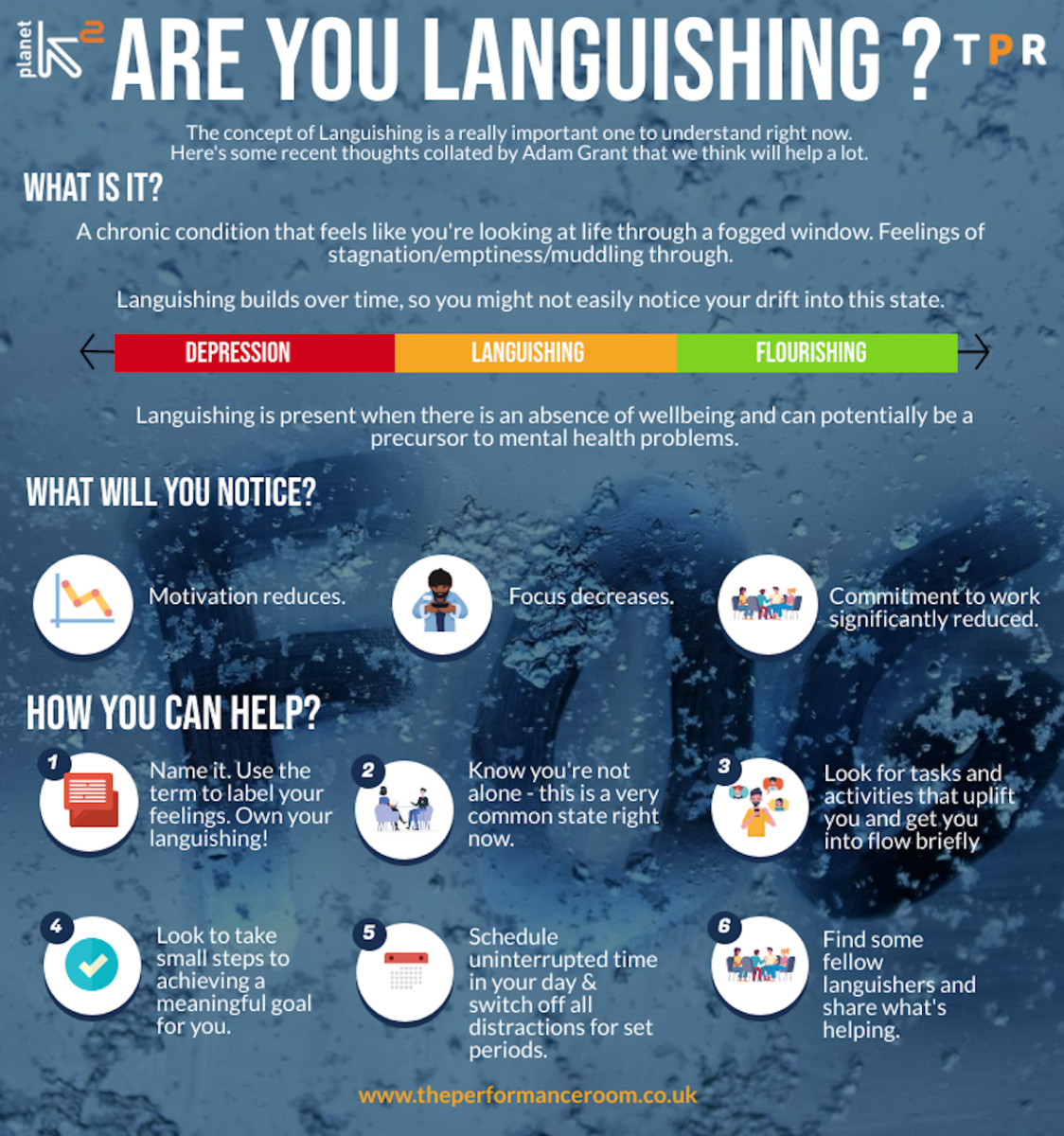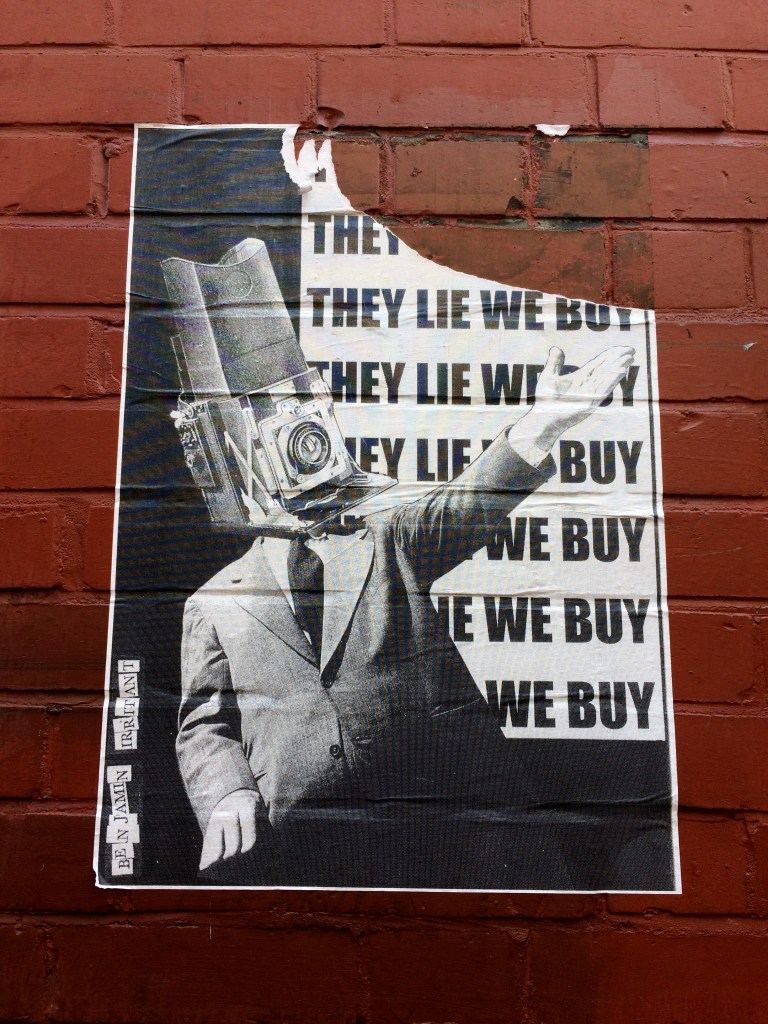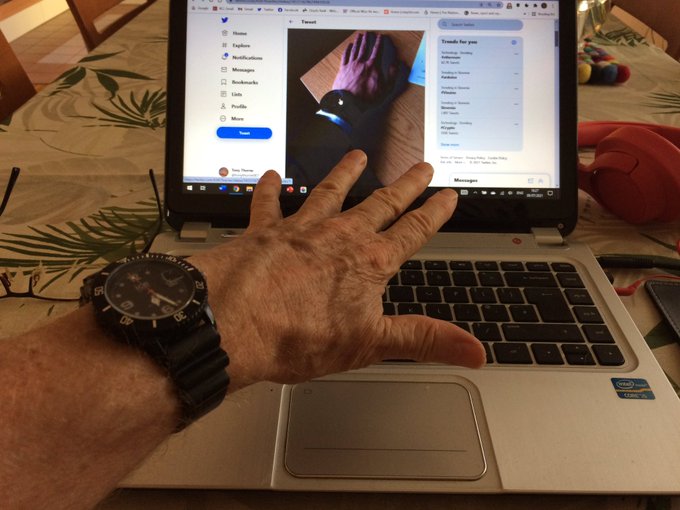One of my tasks during this strange summer of 2021 was to try to recover old files and folders, deleted in error from my archive at King’s College London during a redesign of the website. Among them was a tour d’horizon of the characteristics and significance of Slang, written in 1997. Now an antique curio, I thought nevertheless it might be worth reproducing here for anyone teaching or learning about slang, or simply interested in that variety of language, so that comparisons could be made and conclusions might be drawn.
SLANG AND THE DICTIONARY
Tony Thorne
‘Slang … an attempt of common humanity to escape from bald literalism, and express itself illimitably … the wholesome fermentation or eructation of those processes eternally active in language, by which froth and specks are thrown up, mostly to pass away, though occasionally to settle and permanently crystallise.‘
–Walt Whitman, 1885
What is slang?
Most of us think that we recognise slang when we hear it or see it, but exactly how slang is defined and which terms should or should not be listed under that heading continue to be the subject of debate in the bar-room as much as in the classroom or university seminar. To arrive at a working definition of slang the first edition of the Bloomsbury Dictionary of Contemporary Slang approached the phenomenon from two slightly different angles. Firstly, slang is a style category within the language which occupies an extreme position on the spectrum of formality. Slang is at the end of the line; it lies beyond mere informality or colloquialism, where language is considered too racy, raffish, novel or unsavoury for use in conversation with strangers … So slang enforces intimacy. It often performs an important social function which is to include into or exclude from the intimate circle, using forms of language through which speakers identify with or function within social sub-groups, ranging from surfers, schoolchildren and yuppies, to criminals, drinkers and fornicators. These remain the essential features of slang at the end of the 1990s, although its extreme informality may now seem less shocking than it used to, and its users now include ravers, rappers and net-heads along with the miscreants traditionally cited.
There are other characteristics which have been used to delimit slang, but these may often be the result of prejudice and misunderstanding and not percipience. Slang has been referred to again and again as ‘illegitimate’, ‘low and disreputable’ and condemned by serious writers as ‘a sign and a cause of mental atrophy’(Oliver Wendell Holmes), ‘the advertisement of mental poverty’(James C. Fernal). Its in-built unorthodoxy has led to the assumption that slang in all its incarnations (metaphors, euphemisms, taboo words, catchphrases, nicknames, abbreviations and the rest) is somehow inherently substandard and unwholesome. But linguists and lexicographers cannot (or at least, should not) stigmatise words in the way that society may stigmatise the users of those words and, looked at objectively, slang is no more reprehensible than poetry, with which it has much in common in its creative playing with the conventions and mechanisms of language, its manipulation of metonymy, synechdoche, irony, its wit and inventiveness. In understanding this, and also that slang is a natural product of those ‘processes eternally active in language’, Walt Whitman was ahead of his time.
More recently some writers (Halliday being an influential example) have claimed that the essence of slang is that it is language used in conscious opposition to authority. But slang does not have to be subversive; it may simply encode a shared experience, celebrate a common outlook which may be based as much on (relatively) innocent enjoyment (by, for instance, schoolchildren, drinkers, sports fans, Internet-users) as on illicit activities. Much slang, in fact, functions as an alternative vocabulary, replacing standard terms with more forceful, emotive or interesting versions just for the fun of it: hooter or conk for nose, mutt or pooch for dog, ankle-biter or crumb-snatcher for child are instances. Still hoping to find a defining characteristic, other experts have seized upon the rapid turnover of slang words and announced that this is the key element at work; that slang is concerned with faddishness and that its here-today-gone-tomorrow components are ungraspable and by implication inconsequential. Although novelty and innovation are very important in slang, a close examination of the whole lexicon reveals that, as Whitman had noted, it is not necessarily transient at all. The word punk, for example, has survived in the linguistic underground since the seventeenth century and among the slang synonyms for money – dosh, ackers, spondulicks, rhino, pelf – which were popular in the City of London in the early 1990s are many which are more than a hundred years old. A well-known word like cool in its slang sense is still in use (and has been adopted by other languages, too), although it first appeared around eighty years ago.
Curiously, despite the public’s increasing fascination for slang, as evinced in newspaper and magazine articles and radio programmes, academic linguists in the UK have hitherto shunned it as a field of study. This may be due to a lingering conservatism, or to the fact that it is the standard varieties of English that have to be taught, but whatever the reasons the situation is very different elsewhere. In the US and Australia the study of slang is part of the curriculum in many institutions, in France, Spain, Holland, Scandinavia and Eastern Europe slang, and especially the slang of English, is the subject of more and more research projects and student theses; in all these places slang is discussed in symposia and in learned journals, while in Russia, China and Japan local editions of British and American slang dictionaries can be found on school bookshelves and in university libraries.
Slang Lexicographers
The first glossaries or lexicons of European slang on record were lists of the verbal curiosities used by thieves and ne’er-do-wells which were compiled in Germany and France in the fifteenth century. A hundred years later the first English collections appeared under the titles The Hye Waye to the Spytell House, by Copland, Fraternite of Vacabondes, by Awdeley, and Caveat for Common Cursetours, by Harman. Although dramatists and pamphleteers of seventeenth-century England made spirited use of slang in their works, it was not until the very end of the 1600s that the next important compilation, the first real dictionary of slang, appeared. This was A New Dictionary of the Terms ancient and modern of the Canting Crew by ‘B. E. Gent’, a writer whose real identity is lost to us. In 1785, Captain Francis Grose published the first edition of his Classical Dictionary of the Vulgar Tongue, the most important contribution to slang lexicography until John Camden Hotten’s Dictionary of Modern Slang, Cant and Vulgar Words, 1859, which was overtaken its turn by Farmer and Henley’s more sophisticated Slang and its Analogues in 1890. All these were published in Britain and it was the New Zealander Eric Partridge’s single-handed masterwork A Dictionary of Slang and Unconventional English, also published in London, in 1937, that, despite its lack of citations and sometimes eccentric etymologies, became the yardstick of slang scholarship at least until the arrival of more rigorously organised compendiums from the USA in the 1950s. Since then several larger reference works have been published, usually confining themselves to one geographical area and based mainly on written sources, together with a number of smaller, often excellent specialist dictionaries dealing with categories such as naval slang, Glaswegian slang, rhyming slang, the argot of police and criminals and the jargon of finance and high technology.
The Bloomsbury Dictionary Of Contemporary Slang
The Bloomsbury Dictionary of Contemporary Slang was first produced with the idea of combining the enthusiasms and instincts of a user of slang – someone who had been part of the subcultures and milieux where this language variety has flourished ( and in later life still ventures into clubs, bars, music festivals, football matches and, on occasion, homeless shelters) – with the methods of the modern lexicographer (earlier work on the Longman Dictionary of Contemporary English being a particular influence) and applied linguist. The first edition set out to record the 6,000 or so key terms and 15,000-odd definitions which formed the core of worldwide English language slang from 1950 to 1990: the new, updated edition, published in Autumn 1997, extends the time-frame almost to the millennium and expands the number of entries by two thousand, losing a few obscure, doubtfully attested or just plain uninteresting terms in the process. The dictionary aims to pick up the elusive and picturesque figures of speech that really are in use out there in the multiple anglophone speech communities, and many terms which appear in its pages have never been recorded before. In keeping with the modern principles of dictionary-making, the headwords which are listed here are defined as far as possible in natural, discursive language. The modern dictionary ideally moves beyond mere definition and tries to show how a term functions in the language, who uses it and when and why, what special associations or overtones it may have, perhaps even how it is pronounced. Where possible a history of the word and an indication of its origin will be included and its usage illustrated by an authentic citation or an invented exemplary phrase or sentence.
As with all similar dictionaries, the Bloomsbury volume is based to some extent on consulting written sources such as newspapers, magazines, comic books, novels and works of non-fiction. Other secondary sources of slang are TV and radio programmes, films and song lyrics. Existing glossaries compiled by researchers, by journalists and by Internet enthusiasts were also checked, but treated, like fictional texts and broadcasts, with caution; investigators may be misled by their informants and, as society becomes more self-conscious in its treatment of new and unorthodox language, varieties of so-called slang appear that are only partly authentic, such as the gushing ‘teen-talk’ (a variety of journalese) appearing in UK magazines like Just Seventeen, My Guy or Sugar directed by twenty- and thirty-something journalists at their much younger readers, or the argot developed by writers for cult movies such as Bill and Ted’s Bogus Journey, Wayne’s World and Clueless. The embellishing or inventing of slang is nothing new; Damon Runyon, Raymond Chandler and P. G. Wodehouse all indulged in it, as did British TV comedy writers for Porridge, Minder, Only Fools and Horses, etc., over the last three decades. For the Bloomsbury dictionary terms have been admitted if they can be verified from two or more sources, thereby, sadly, shutting out examples of idiolect (one person’s private language), restricted sociolects (terms shared by very small groups) and nonce terms (one-off coinages).
Any description of slang that is based purely on secondary or written sources (and most still are) cannot hope to do justice to a language which is primarily transmitted orally. Slang terms may exist in spoken usage for many years, even for centuries, before being written down; some are never committed to paper, so there is an absolute need for work ‘in the field’ with primary sources; eavesdropping on and interviewing the users of slang themselves, and, where they are not able to report objectively on the words and phrases they are using, their neighbours, parents, colleagues, fellow-students and friends must be mobilised. This is the most exciting part of lexicography, if sometimes the most risky. The modern language researchers going undercover to listen in on conversations or setting up networks of informants at street-level can imagine themselves as successors to the pioneering anthropologists of the last century, rather than ‘harmless drudges’ (Dr Johnson’s memorable definition of the lexicographer) toiling alone in dusty libraries or staring at flickering screens.
Slang at the Millennium
The traditional breeding grounds of slang have always been secretive, often disenfranchised social groups and closed institutions with their rituals and codes. This has not changed, although the users in question have. Where once it was the armed forces, the public schools and Oxbridge that in Britain dominated socially and linguistically, now it is the media, the comprehensive playground and the new universities which exercise most influence on popular language: the office, the trading-floor and the computer-room have replaced the workshop, the factory and the street-market as nurturing environments for slang. The street gang and the prison, whence came nearly all the ‘cant’ that filled the early glossaries, still provide a great volume of slang, as do the subcultures of rave, techno and jungle music, crusties and new agers, skaters and snowboarders. Football metaphors and in-jokes have long since ousted the cricketing imagery of yesteryear. Some special types of slang including pig-latin, infixing, and backslang (reversal, as in yob) seem virtually to have disappeared in the last few years, while the rhyming slang which arose in the early Victorian age continues to flourish in Britain and Australia, replenished by succeeding generations, and the even older parlyaree or polari (a romance/romany/yiddish lingua franca) lingers on in corners of London’s theatre-land and gay community. The effect of the media and more recently of the Internet means that slang in English can no longer be seen as a set of discrete localised dialects, but as a continuum or a bundle of overlapping vocabularies stretching from North America and the Caribbean through Ireland and the UK on to South Africa, South and East Asia and Australasia. Each of these communities has its own peculiarities of speech, but instantaneous communications and the effect of English language movies, TV soaps and music means that there is a core of slang that is common to all of them and into which they can feed. The feeding in still comes mainly from the US, and to a lesser extent Britain and Australia; slang from other areas and the slang of minorities in the larger communities has yet to make much impression on global English, with one significant exception. That is the black slang which buzzes between Brooklyn, Trenchtown, Brixton and Soweto before, in many cases, crossing over to pervade the language of the underworld, teenagers ( – it is the single largest source for current adolescent slang in both the UK and US), the music industry and showbusiness. Within one country previously obscure local slang can become nationally known, whether spread by the bush telegraph that has always linked schools and colleges or by the media: Brookside, Coronation Street, Rab C. Nesbitt and Viz magazine have all helped in disseminating British regionalisms. This mixing-up of national and local means that past assumptions about usage may no longer hold true: the earnest English traveller, having learned that fag and bum mean something else in North America, now finds that in fashionable US campus-speak they can actually mean cigarette and backside. In the meantime the alert American in Britain learns that cigarettes have become tabs or biffs and backside is now often rendered by the Jamaican batty .
Speakers of English everywhere seem to have become more liberal, admitting more and more slang into their unselfconscious everyday speech; gobsmacked, O.T.T, wimp and sorted can now be heard among the respectable British middle-aged; terms such as horny and bullshit which were not so long ago considered vulgar in the extreme are now heard regularly on radio and television, while former taboo terms, notably the ubiquitous British shag , occur even in the conversation of young ladies. In Oakland, California, the liberalising process reached new extremes late in 1996 with the promotion of so-called Ebonics : black street speech given equal status with the language of the dominant white culture.
Youthspeak
The greatest number of new terms appearing in the new edition of the dictionary are used by adolescents and children, the group in society most given to celebrating heightened sensations, new experiences and to renaming the features of their world, as well as mocking anyone less interesting or younger or older than themselves. But the rigid generation gap which used to operate in the family and school has to some extent disappeared. Children still distance themselves from their parents and other authority figures by their use of a secret code, but the boomers – the baby boom generation – grew up identifying themselves with subversion and liberalism and, now that they are parents in their turn, many of them are unwilling either to disapprove of or to give up the use of slang, picking up their children’s words (often much to the latters’ embarrassment) and evolving their own family-based language (helicopters, velcroids, howlers, chap-esses are examples).
The main obsessions among slang users of all ages, as revealed by word counts, have not changed; intoxication by drink or drugs throws up (no pun intended) the largest number of synonyms; lashed, langered, mullered and hooted are recent additions to this part of the lexicon. These are followed by words related to sex and romance –copping off, out trouting, on the sniff and jam, lam, slam and the rest – and the many vogue terms of approval that go in and out of fashion among the young (in Britain ace, brill, wicked and phat have given way to top, mint, fit and dope which are themselves on the way out at the time of writing). The number of nicknames for money, bollers, boyz, beer-tokens, squirt and spon among them, has predictably increased since the materialist 1980s and adolescent concern with identity-building and status-confirming continues to produce a host of dismissive epithets for the unfortunate misfit, some of which, like wendy, spod, licker, are confined to the school environment while others, such as trainspotter, anorak and geek, have crossed over into generalised usage.
Other obsessions are more curious; is it the North American housewife’s hygiene fetish which has given us more than a dozen terms (dust-bunny, dust-kitty, ghost-turd, etc.) for the balls of fluff found on an unswept floor, where British English has only one (beggars velvet)? Why do speakers in post-industrial Britain and Australia still need a dozen or more words to denote the flakes of dung that hang from the rear of sheep and other mammals, words like dags, dangleberries, dingleberries, jub-nuts, winnets and wittens? Teenagers have their fixations, finding wigs (toop, syrup, Irish, rug) and haemorrhoids (farmers, Emma Freuds, nauticals) particularly hilarious. A final curiosity is the appearance in teenage speech fashionable vogue terms which are actually much older than their users realise: once again referring to money, British youth has come up with luka ( the humorous pejorative “filthy lucre” in a new guise), Americans with duckets (formerly “ducats”, the Venetian gold coins used all over Renaissance Europe).
This introductory article is adapted from the Bloomsbury Dictionary of Contemporary Slang, 2nd edition, 1997.
For other articles on Slang on this site see below or enter keyword (slang, MLE, youth language) in the search box











